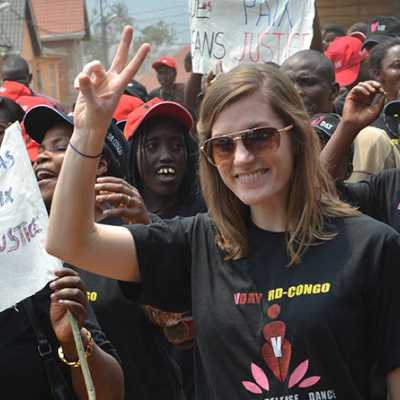Around the world, more refugees are going hungry than ever before. In honor of World Refugee Day, Sunday, June 20, our challenge is simple: let's feed at least 1,000 refugee families. A gift of $25 reaches a refugee family in need.
When we last updated our "9 Facts About Refugees" blog post in 2018, an estimated 70 million people around the world had been forced from their homes by disaster, conflict or other life-threatening events. As of 2020 that number has climbed to 80 million, according to the United Nations High Commissioner for Refugees (UNHCR).
That's 80 million people who were caught between two impossible choices this year: follow mandates to "stay home" during a global pandemic, or flee from desperate conditions like famine and war to seek safety elsewhere.
COVID-19 has created new challenges for everyone, but especially those who were already struggling to survive. As we observe World Refugee Day on June 20, here are five new facts about refugees and displaced people in the COVID-19 era.
1. Weather disasters made "sheltering in place" impossible for millions
COVID-19 was not the only emergency in the last year. Changing weather patterns have created larger and more frequent natural disasters around the world, like the back-to-back hurricanes in Central America for example.
In 2020, weather-related disasters like storms, floods, droughts and wildfires displaced three times more people than conflicts did. That is a significant jump from previous years. (For the past decade, weather events have caused only twice as much displacement as conflict.) As climate change worsens, more and more people will be forced to find more hospitable places to live.
2. Hunger and displacement are closely linked
Whether it's too much rain or too little, climate change means families can't grow the food they need to survive. With weather disasters on the rise, it's no surprise that food insecurity is driving more and more people to move. Among the world's worst food crises, nine out of 10 are in countries with the largest number of internally displaced persons. As one life-threatening challenge piles on top of the next, it becomes all the harder for families to find stability.
3. The COVID-19 pandemic has worsened hunger for refugees and IDPs
Already living on the edge of survival, with some literally running for their lives, many refugees have struggled even harder to find enough to eat since the pandemic began.
One survey of people affected by conflict and displacement found that three out of four had lost their income since the start of the pandemic.
In East Africa, millions of refugees have received up to 30% less food assistance in the last year, because the COVID crisis diverted resources away from the World Food Programme. Plus, extended school closures have meant refugee children who normally receive meals at school no longer have access to their most reliable sources of food.
In these communities, which are often just informal camps, starvation remains a bigger threat than the virus.
4. Hunger can lead to desperate choices
Being malnourished has serious consequences on health. It weakens the immune system, increasing a person's risk of becoming seriously ill. Malnourished children may become stunted and fail to develop physically and cognitively. But hunger also has devastating impacts beyond physical health.
For example, at least 4 million people in Yemen have been driven from their homes by the country's ongoing civil war, and the number only continues to grow. Nearly half of the population is going hungry, and cases of acute malnutrition among young children are at their at record levels. In a recent survey, three in five people said they could not afford basic items, and some are resorting to child labor and child marriage to ease expenses and feed their families.
5. The needs are vast, especially as the pandemic continues, but you can help
Climate, conflict and COVID-19 continue to force people from their homes in large numbers. But no matter where they live, they are our neighbors. They are mothers and fathers who want their children to grow up healthy. They are children who deserve nourishment, peace and stability.
That's why we're honored to carry your love to these neighbors who have, so often, been forsaken by the rest of the world. Your generosity is already hard at work in places where displacement is at its highest — places like the Democratic Republic of Congo, Syria, Yemen, the Sahel, South Sudan and Peru.
Thank you for finding room in your heart for these vulnerable families.
Until your love reaches every neighbor.



